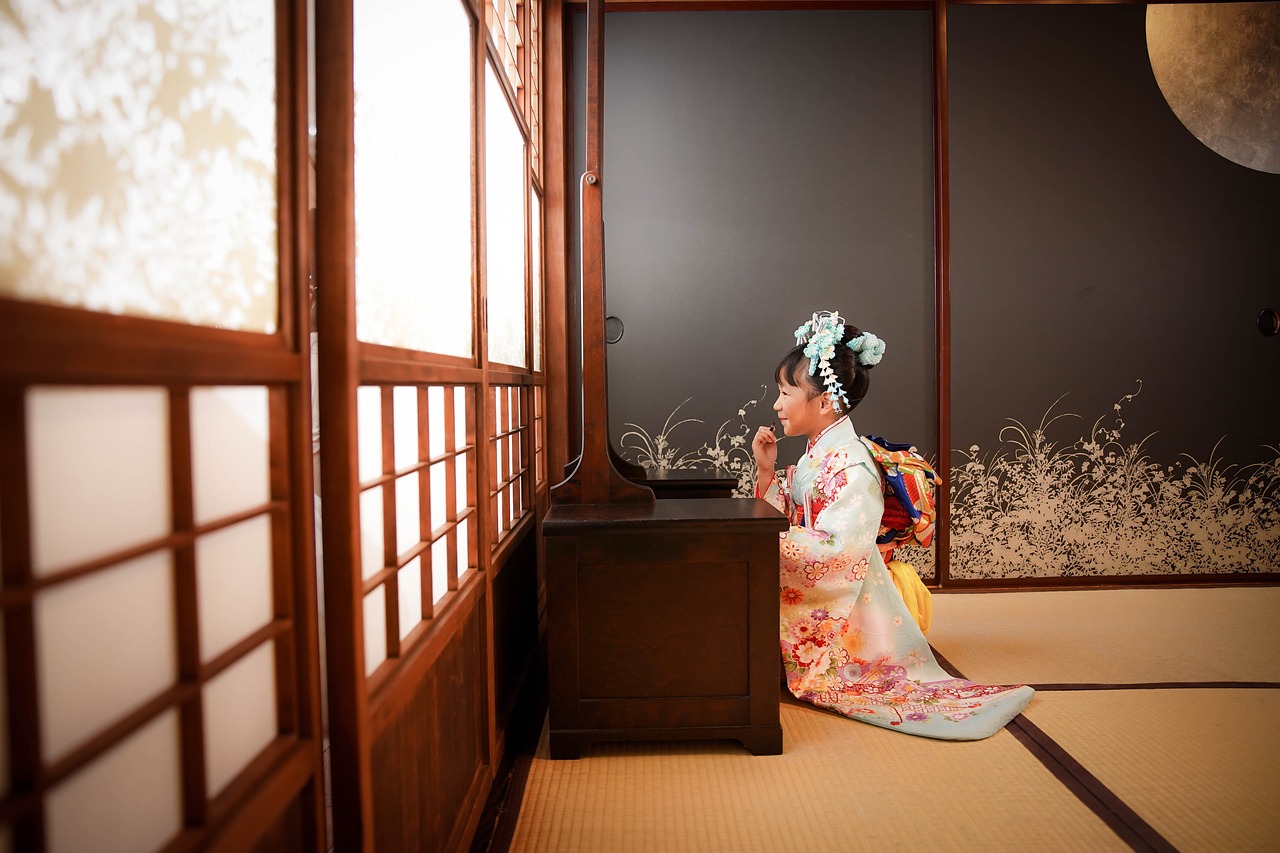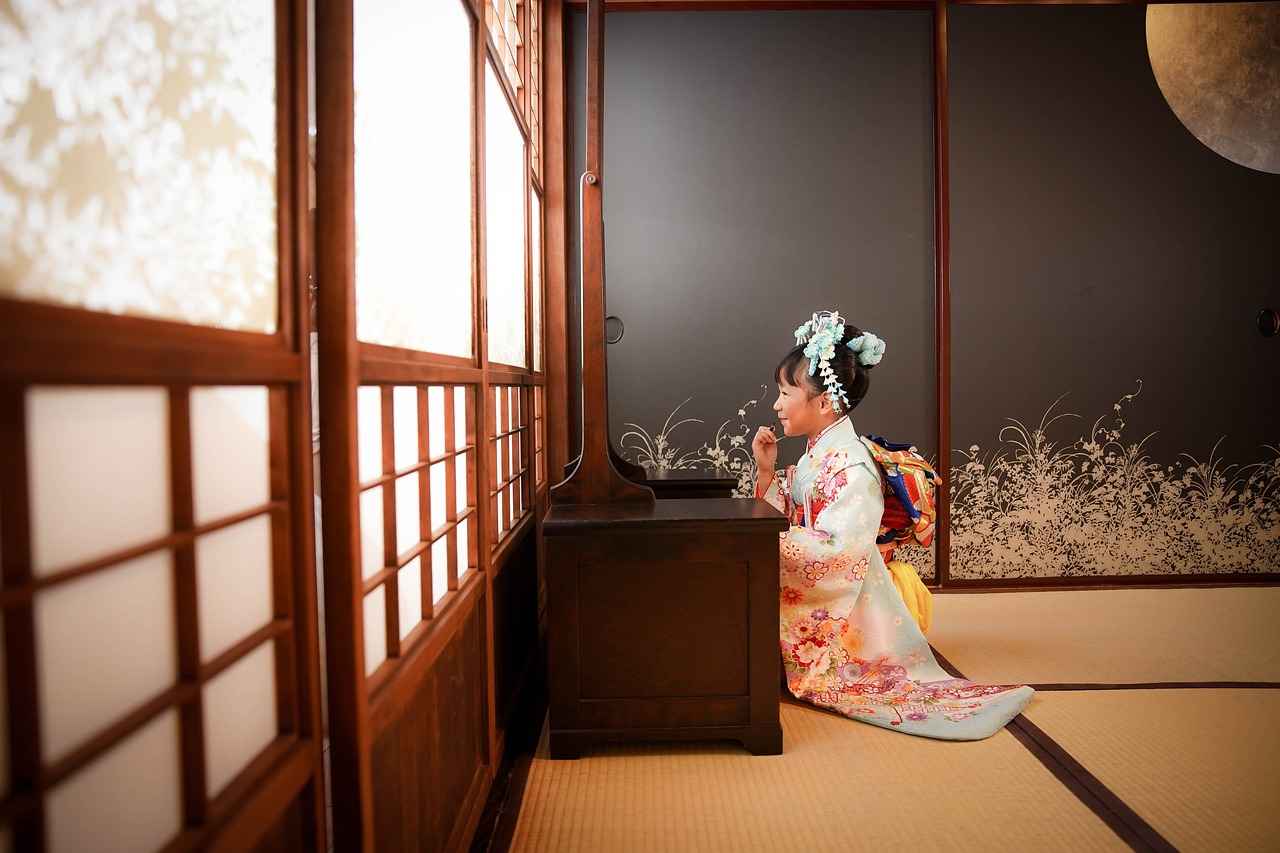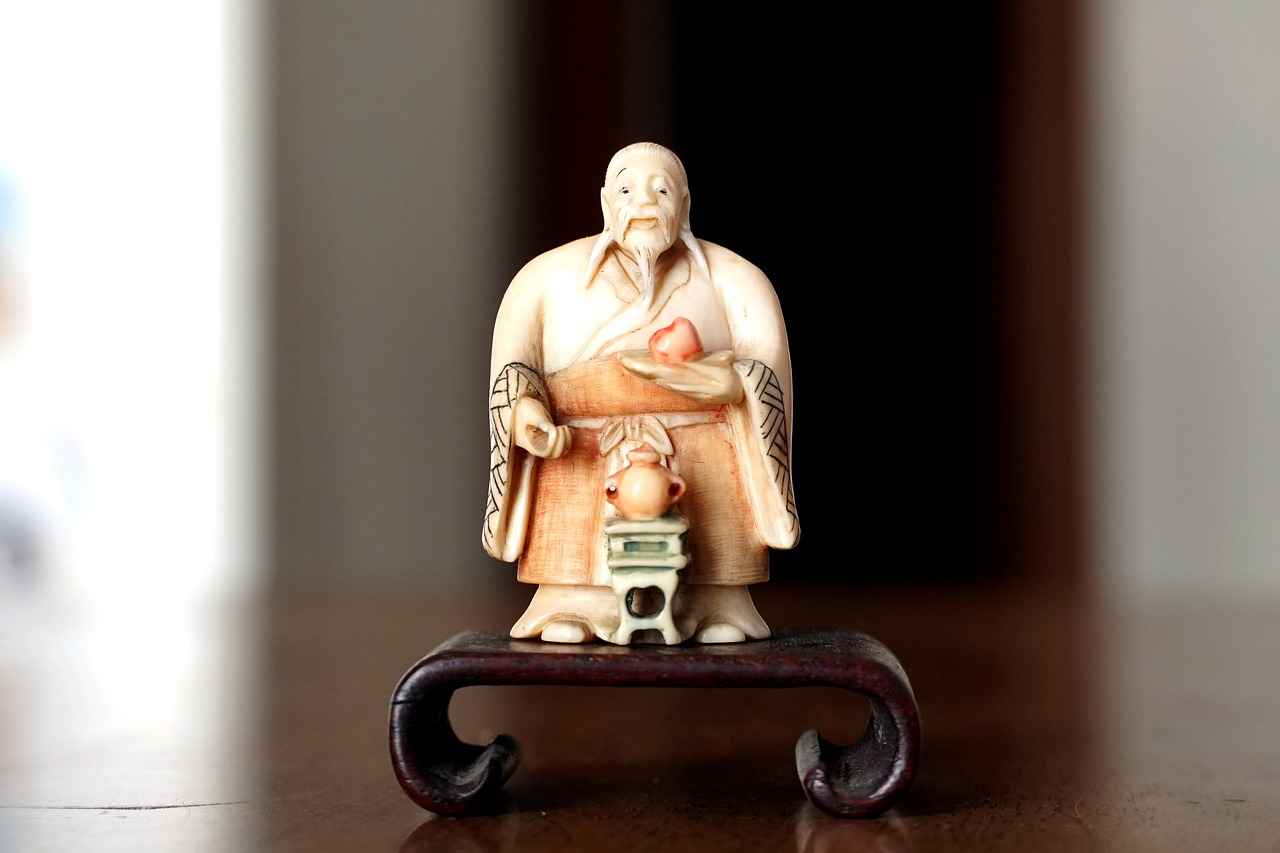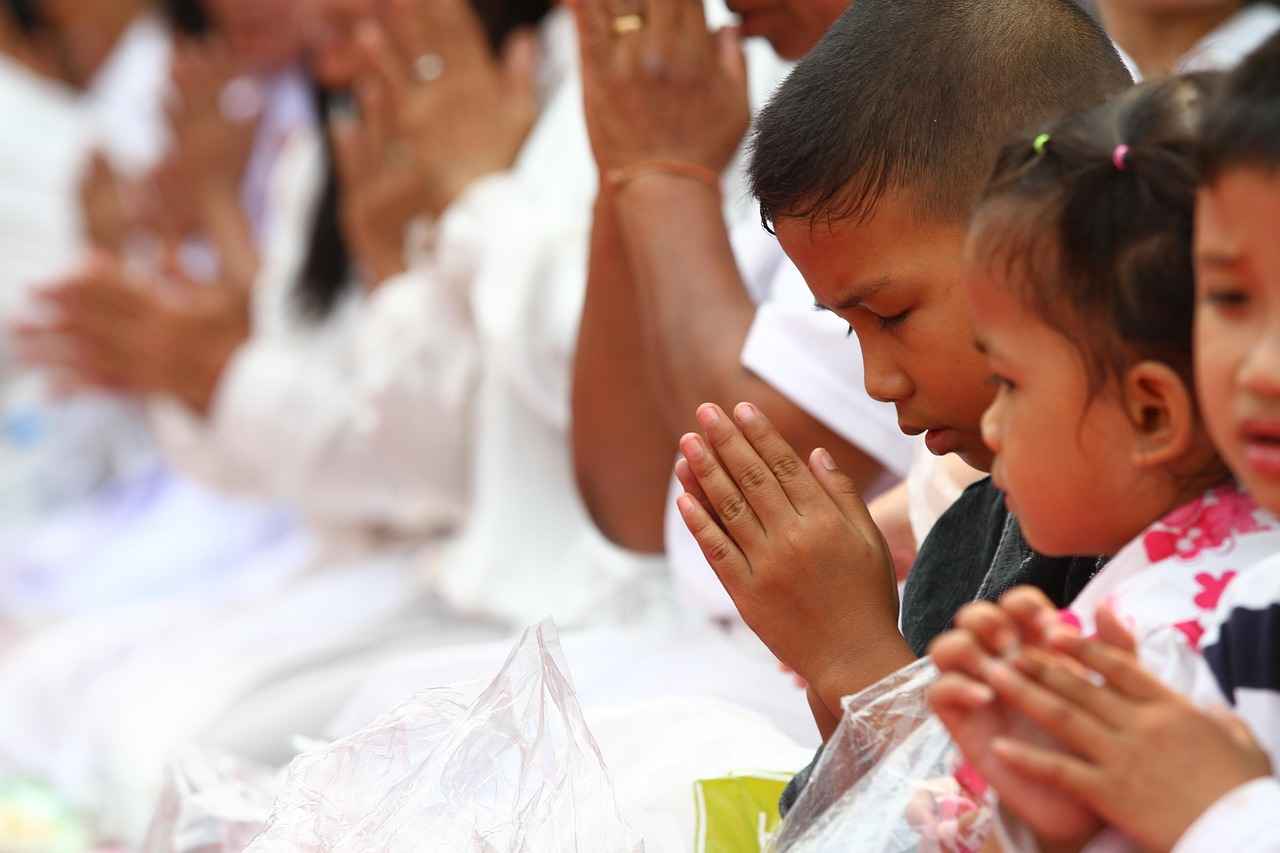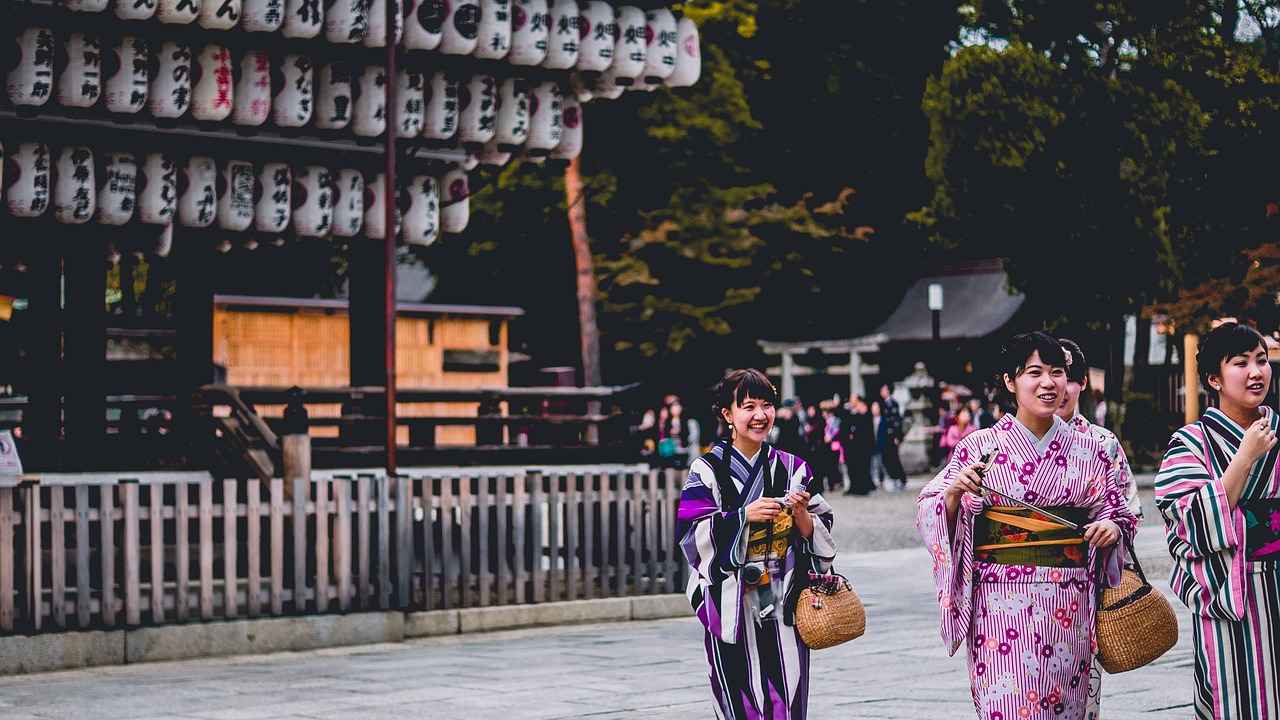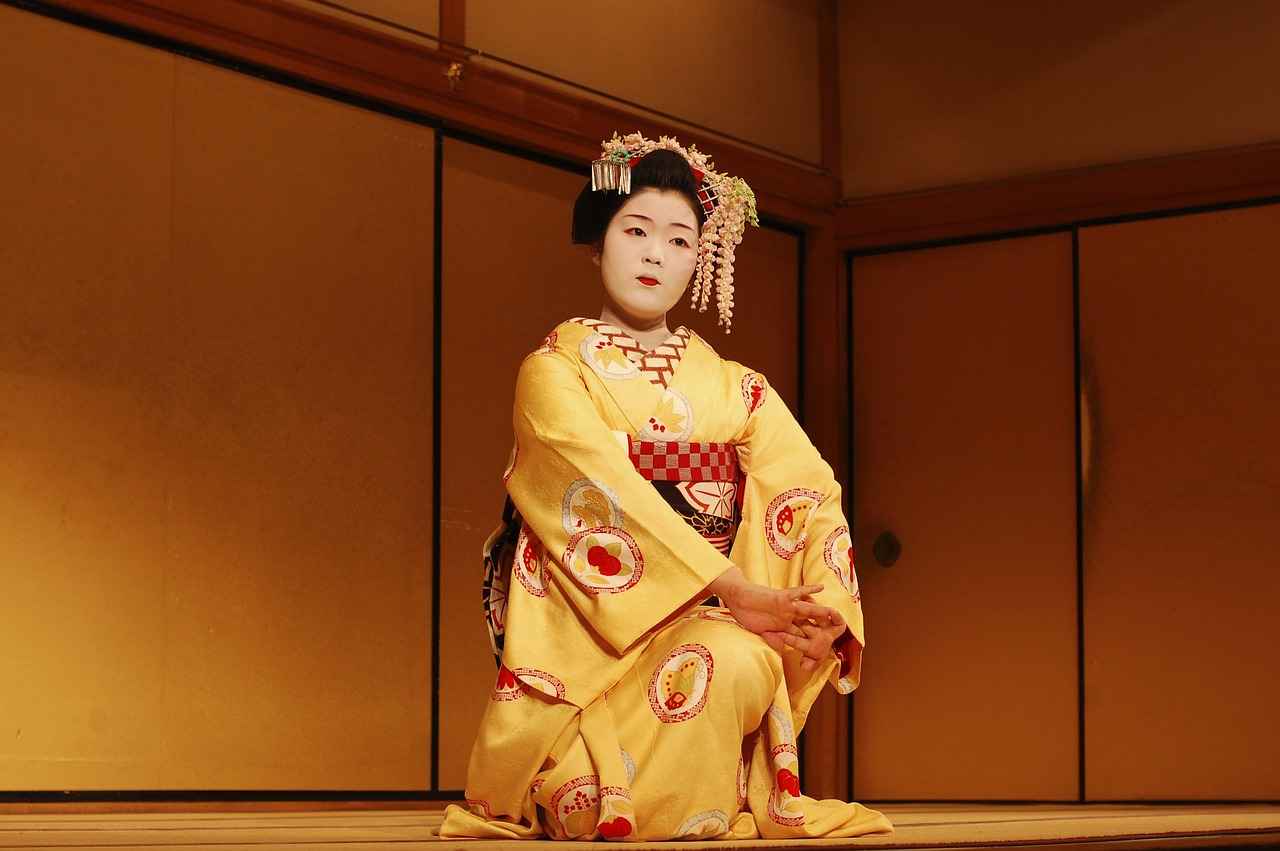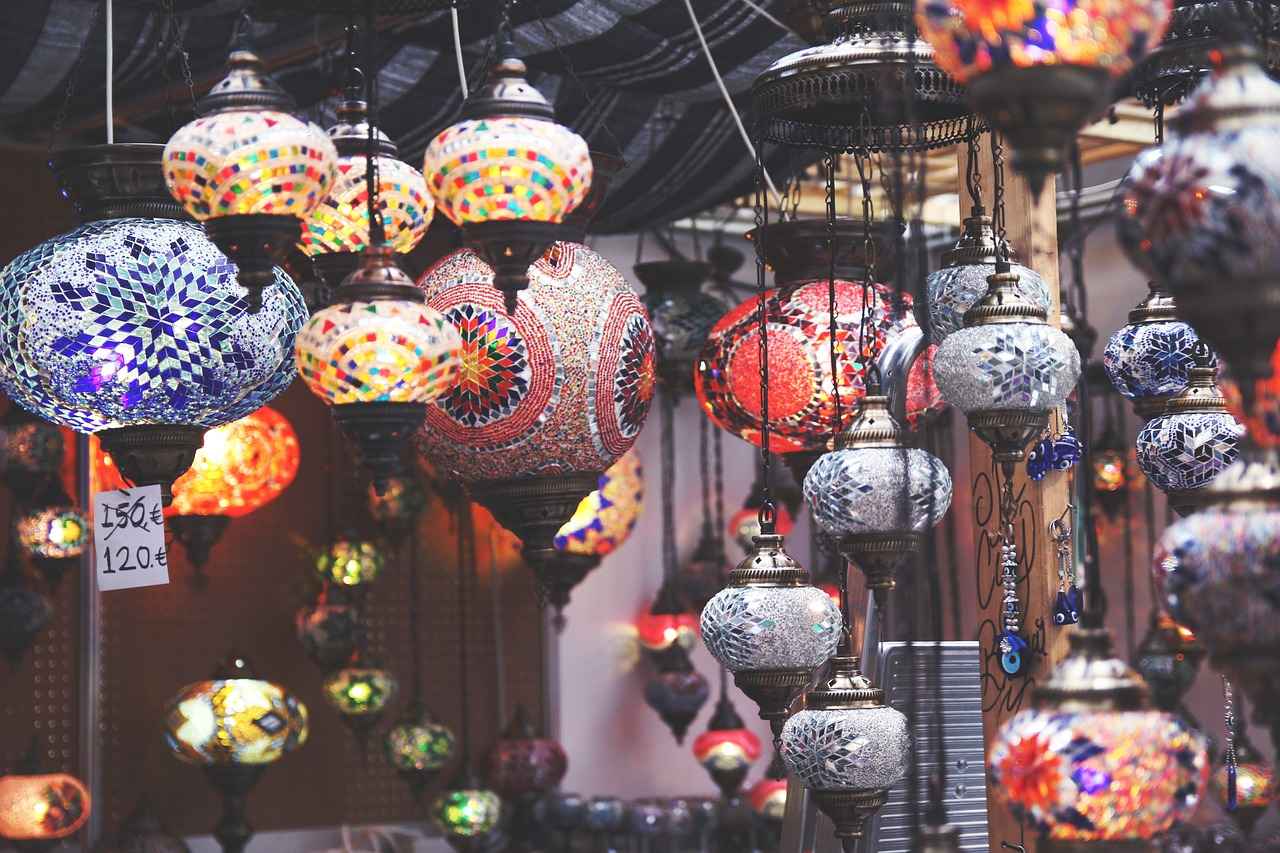This article delves into the essential components of kimonos that can elevate your DIY projects, providing insights into materials, techniques, and creative ideas for crafting unique pieces.
Understanding Kimono Fabrics
When embarking on a DIY kimono project, the choice of fabric is pivotal. Silk is renowned for its luxurious feel and vibrant colors, making it ideal for formal kimonos. Cotton, on the other hand, offers breathability and comfort, perfect for casual wear. For those seeking durability and affordability, synthetic fabrics provide a wide array of patterns and textures.
Essential Kimono Patterns
Kimono patterns can significantly influence the aesthetic of your creation. Traditional patterns often carry cultural significance, while modern designs may incorporate abstract elements. When selecting a pattern, consider how it aligns with your project’s theme and your personal style.
Traditional Kimono Styles
- Furisode: Known for its long sleeves, this style is perfect for formal events.
- Yukata: A lightweight, casual kimono ideal for summer festivals.
Choosing the Right Accessories
Accessories can greatly enhance your kimono. The obi serves as the main belt, while the obijime adds a decorative touch. Don’t forget the haneri, a collar piece that can add a pop of color.
Techniques for Customizing Kimonos
Customization techniques such as Shibori dyeing and embroidery can transform a simple kimono into a unique masterpiece. Shibori allows for intricate designs, while embroidery can add personal messages or motifs.
Inspiration from Cultural Significance
Understanding the cultural background of kimonos can inspire your DIY projects. Each pattern and color often tells a story, providing depth and meaning to your creations.
Tips for Sourcing Kimono Parts
Finding high-quality materials is essential. Check local fabric stores or online marketplaces for a diverse selection of fabrics and accessories.
Final Thoughts on Your Kimono DIY Project
Embrace your creativity and let your kimono project reflect your personal style. With the right materials and techniques, you can create a stunning piece that showcases your craftsmanship.

Understanding Kimono Fabrics
Kimonos are renowned for their exquisite beauty and cultural significance, and a substantial part of that allure stems from the fabrics used in their creation. When embarking on a DIY kimono project, understanding the different types of fabrics available is crucial, as each material significantly impacts the overall look and feel of the finished piece.
- Silk: This luxurious fabric is often the first choice for traditional kimonos. Its natural sheen and softness provide a flowing drape that enhances the garment’s elegance. Silk kimonos are perfect for formal occasions and special events, making them a popular selection for DIY enthusiasts looking to create something truly stunning.
- Cotton: Known for its breathability and comfort, cotton is an excellent choice for casual kimonos, especially in warmer climates. It is easy to work with and can be found in a variety of prints and colors, making it ideal for summer projects. Cotton kimonos often have a relaxed vibe, perfect for everyday wear.
- Synthetic Fabrics: Options like polyester or rayon offer a budget-friendly alternative while mimicking the look of more expensive materials. These fabrics are often more durable and easier to care for, which can be advantageous for DIY projects. However, they may not provide the same luxurious feel as silk or the comfort of cotton.
In addition to the type of fabric, the weight and texture also play a vital role in the kimono’s final appearance. Heavier fabrics will create a more structured look, while lighter materials will flow gracefully. Consider your design goals and the intended use of your kimono when selecting the fabric.
Ultimately, the choice of fabric can transform your DIY project, allowing you to express your style and creativity. By understanding the unique properties of each material, you can make informed decisions that enhance the beauty and functionality of your kimono.

Essential Kimono Patterns
When exploring the world of kimonos, understanding the patterns is essential for any DIY enthusiast. Both traditional and modern kimono patterns carry significant cultural meanings and aesthetic values, making them vital components in your creative projects.
Traditional Kimono Patterns
- Asanoha: This pattern, resembling hemp leaves, symbolizes growth and resilience, making it a popular choice for various kimono styles.
- Seigaiha: Featuring waves, this design represents peace and tranquility, often used in ceremonial kimonos.
- Kikkō: The tortoise shell pattern signifies longevity and good fortune, making it a favored choice for auspicious occasions.
Modern Kimono Patterns
Contemporary designers have embraced innovation, creating patterns that blend traditional motifs with modern aesthetics. These include:
- Geometric Shapes: Bold lines and shapes that appeal to a younger audience.
- Floral Designs: Bright and vibrant flowers that reflect current fashion trends.
- Abstract Art: Unique interpretations that allow for personal expression in DIY projects.
Choosing the Right Design
When selecting a pattern for your kimono project, consider the following:
- Purpose: Is it for a formal event or casual wear? The occasion will guide your choice.
- Fabric: Different fabrics can enhance or diminish the visual impact of the pattern.
- Personal Style: Choose a design that resonates with your personality and aesthetic preferences.
In conclusion, understanding both traditional and modern kimono patterns is crucial for creating a meaningful and aesthetically pleasing piece. By thoughtfully selecting your designs, you can ensure that your kimono reflects your creativity and honors the rich cultural heritage it represents.
Traditional Kimono Styles
In the world of traditional Japanese attire, kimonos stand out as a symbol of elegance and cultural heritage. Among the myriad styles available, two notable types are the Furisode and the Yukata. Each of these kimonos carries its own unique characteristics and cultural significance, making them excellent sources of inspiration for your next DIY project.
The Furisode is a formal kimono distinguished by its long, flowing sleeves, typically worn by young women during special occasions such as weddings and coming-of-age ceremonies. The vibrant colors and intricate patterns often reflect seasonal themes, allowing for a rich palette that can inspire your designs. When considering a DIY project, think about how you can incorporate similar bold colors and elaborate patterns into your fabric choices. Consider using silk or high-quality cotton to replicate the luxurious feel of a traditional Furisode.
On the other hand, the Yukata serves as a casual summer kimono, usually made from lightweight cotton. It is often worn at festivals and during hot weather, making it a versatile choice for DIY enthusiasts looking to create comfortable, stylish pieces. The simplicity of the Yukata allows for creative freedom, encouraging DIYers to experiment with colors and patterns that resonate with their personal style. You might consider adding playful embellishments, such as embroidery or fabric dyeing techniques, to make your Yukata stand out.
Ultimately, both the Furisode and Yukata offer rich opportunities for DIY inspiration. By understanding their unique characteristics and cultural significance, you can create pieces that not only reflect your creativity but also pay homage to traditional Japanese fashion.
Furisode: The Formal Choice
Furisode kimonos are a symbol of elegance and tradition, making them a popular choice for formal occasions and special projects. These stunning garments are characterized by their long sleeves, which can extend up to 100 centimeters, and are typically worn by young women during significant life events such as weddings, coming-of-age ceremonies, and other formal celebrations.
The design of a Furisode is not just about aesthetics; it also carries deep cultural significance. Often adorned with intricate patterns and vibrant colors, these kimonos reflect the wearer’s personality and status within society. The choice of color and design can signify various meanings, such as good fortune or celebration, making them a thoughtful selection for special occasions.
In addition to their visual appeal, Furisode kimonos are crafted from high-quality materials, predominantly silk, which adds to their luxurious feel. The fabric drapes beautifully, enhancing the overall silhouette of the wearer. Many kimonos feature elaborate embroidery or dyeing techniques, showcasing the craftsmanship involved in their creation.
When considering a Furisode for a DIY project, it’s essential to understand the styling and accessories that complement these garments. The obi, or belt, is a crucial accessory that not only secures the kimono but also adds a layer of elegance. Choosing a well-coordinated obi can enhance the overall look and feel of the outfit.
Furthermore, Furisode kimonos allow for creative customization. Techniques such as embroidery or Shibori dyeing can personalize these garments, making them unique to the wearer. This blend of tradition and creativity is what makes Furisode kimonos an ideal choice for both formal events and artistic DIY projects.
In conclusion, Furisode kimonos are not only a beautiful representation of Japanese culture but also a versatile option for those looking to make a statement at formal occasions. Their rich history, combined with the potential for personalization, ensures they remain a cherished choice in the world of fashion.
Yukata: The Casual Alternative
Yukata is a traditional Japanese garment that embodies the essence of summer leisure and casual elegance. Often made from lightweight cotton, Yukata serves as a perfect choice for warm weather, making it an ideal fabric for various DIY summer projects.
The Yukata is not just a simple kimono; it is a cultural icon that reflects Japan’s vibrant history and aesthetic values. Unlike the more formal kimono, the Yukata is designed for comfort and ease, typically worn during summer festivals, fireworks displays, and casual outings. Its breathable fabric allows for maximum airflow, making it suitable for hot days.
When embarking on a DIY project, the Yukata’s lightweight fabric offers several advantages:
- Versatility: Yukata fabric can be used for various projects, from clothing to home decor.
- Ease of Use: Its forgiving nature makes it manageable for beginners and experts alike.
- Colorful Patterns: Yukatas come in a wide array of vibrant colors and traditional patterns, allowing for creative expression.
To enhance your DIY project, consider using traditional motifs such as cherry blossoms or waves, which are commonly found on Yukata fabrics. These patterns not only add visual interest but also connect your creation to Japanese culture.
Incorporating a Yukata into your DIY projects can also be a sustainable choice. By repurposing an old Yukata or using fabric remnants, you can create unique pieces while minimizing waste. Whether you’re crafting a summer dress, a stylish tote bag, or even home accessories, the Yukata provides a beautiful and functional option.
In conclusion, the Yukata is more than just a casual summer kimono; it is a versatile fabric that can inspire a multitude of DIY projects. Its lightweight nature, vibrant patterns, and cultural significance make it an excellent choice for anyone looking to create something special this summer.
Modern Interpretations of Kimono Design
In recent years, the world of fashion has witnessed a remarkable resurgence of traditional garments, with the kimono taking center stage. are not only preserving cultural heritage but also infusing it with contemporary flair, making it a perfect choice for DIY enthusiasts looking to create unique pieces.
Contemporary designers are reimagining kimono styles by experimenting with fabrics, cuts, and patterns. This evolution allows for a diverse range of designs that cater to various tastes and occasions. For instance, designers are incorporating lightweight materials like chiffon and linen into kimono designs, making them suitable for casual wear while maintaining the elegance associated with traditional styles.
- Asymmetrical Cuts: Many modern kimonos feature asymmetrical hemlines and unconventional silhouettes, offering a fresh twist on classic designs.
- Bold Patterns: While traditional kimonos often showcase intricate floral patterns, contemporary designs are embracing geometric shapes and vibrant colors, appealing to a younger audience.
- Layering Techniques: The layering of kimonos over other garments, such as dresses or pants, has become a popular trend, allowing for creative expression and versatility.
For DIY projects, these modern interpretations provide endless inspiration. By selecting unique fabrics and patterns, you can create kimonos that reflect your personal style. Consider incorporating elements like embroidery or fabric paint to add a personal touch. Additionally, experimenting with different lengths and cuts can transform a simple kimono into a statement piece.
In conclusion, the reimagining of kimono styles by contemporary designers opens up a world of possibilities for DIY enthusiasts. By embracing these modern interpretations, you can craft unique pieces that honor tradition while showcasing your creativity. So, gather your materials and let your imagination guide you!

Choosing the Right Accessories
is essential when it comes to enhancing your kimono project. The right accessories not only add flair but also contribute to the authenticity of your creation. In this section, we will explore some key components that can elevate your kimono styling.
- Obi: The obi is a wide belt that wraps around the waist, playing a crucial role in kimono fashion. It serves both functional and aesthetic purposes, helping to secure the kimono while also adding a pop of color or intricate design. When selecting an obi, consider the fabric and pattern to ensure it complements your kimono’s overall look.
- Obijime: This decorative cord is tied over the obi and adds a finishing touch to your outfit. Obijime comes in various colors, materials, and styles, allowing you to personalize your kimono further. Choosing the right obijime can enhance the visual appeal and provide a cohesive look.
- Haneri: The haneri is a collar worn under the kimono’s main collar. It is often made from contrasting fabric and can be embroidered or embellished to showcase your creativity. This accessory not only provides comfort but also allows for additional layering and styling options.
When selecting these accessories, consider the color palette and theme of your kimono project. Accessories should harmonize with the main garment, reflecting your personal style while adhering to traditional aesthetics. For instance, a vibrant obi can add a striking contrast to a more subdued kimono, while a subtle obijime can enhance a detailed design without overwhelming it.
In conclusion, the right accessories are vital in bringing your kimono project to life. By carefully choosing elements like obi, obijime, and haneri, you can achieve a polished and authentic look that showcases your creativity and craftsmanship. Embrace these essential components to transform your DIY kimono into a stunning piece of art.
Obi: The Belt of Elegance
The obi is not just a simple belt; it is a crucial element that defines the overall aesthetic of a kimono. Understanding its significance is essential for anyone looking to create a stunning DIY kimono project. The obi serves as the focal point of the outfit, often showcasing intricate designs and vibrant colors that can either complement or contrast with the kimono fabric.
When selecting the perfect obi for your DIY creation, consider the following factors:
- Style: There are various styles of obi, including hanabi, fukuro, and nagoya. Each style serves different occasions and can dramatically affect the look of your kimono.
- Material: The obi can be made from silk, cotton, or synthetic fabrics. Silk is often preferred for formal occasions due to its luxurious appearance, while cotton is suitable for casual wear.
- Color and Pattern: Choose colors and patterns that either match or enhance the kimono’s design. A bold obi can add a striking contrast, while a subtle one can create a harmonious look.
- Width and Length: The width and length of the obi should be suitable for your body type and the style of kimono you are creating. A wider obi can make a statement, while a narrower one may provide a more delicate appearance.
Furthermore, understanding how to tie the obi properly is essential. The way the obi is tied can change the entire silhouette of the kimono, so practicing different styles of knots can be beneficial. For instance, the taiko knot is popular for formal occasions, while a simple knot may suffice for casual wear.
In conclusion, the obi is a vital accessory in kimono styling that can elevate your DIY project. By paying attention to its style, material, and tying technique, you can create a beautiful and personalized kimono that reflects your unique style and creativity.
Obijime: The Finishing Touch
Obijime is a decorative cord that plays a vital role in the overall aesthetic of a kimono. This elegant accessory not only enhances the visual appeal of the garment but also serves practical purposes in traditional Japanese attire. In this section, we will explore how incorporating obijime into your kimono project can elevate its beauty and style.
Traditionally, obijime is worn over the obi, which is the wide belt that secures the kimono. The cord is typically made from silk or cotton and comes in a variety of colors and patterns, allowing for endless customization. By choosing the right obijime, you can create a striking contrast or a harmonious blend with the colors of your kimono.
- Enhancement of Color: The right obijime can bring out the colors of your kimono fabric, making it more vibrant and visually appealing.
- Texture Addition: Different materials and weaves can add texture to your outfit, providing depth and interest.
- Personal Expression: With countless designs available, obijime allows you to express your personal style and creativity.
When selecting an obijime, consider the occasion for which you are creating the kimono. For formal events, opt for more intricate designs with rich colors, while casual outings may call for simpler, lighter options. Additionally, the way you tie the obijime can also impact the overall look. A well-tied obijime can create a polished and sophisticated finish.
In conclusion, obijime is more than just a decorative element; it is a crucial component that can transform your kimono project from ordinary to extraordinary. By carefully selecting and styling this accessory, you can enhance the beauty and uniqueness of your creation, making it a true reflection of your artistic vision.

Techniques for Customizing Kimonos
When it comes to making your kimono truly unique, understanding various customization techniques is essential. From dyeing to embroidery and sewing, each method allows for personal expression and creativity in your DIY project.
- Dyeing Techniques: One of the most popular methods for customizing kimonos is through dyeing. Techniques like Shibori, a traditional Japanese tie-dye method, can create beautiful patterns and textures. You can also explore batik or ombre dyeing to achieve striking effects that reflect your personal style.
- Embroidery: Adding embroidery is an excellent way to personalize your kimono. You can choose from various stitches, such as sashiko, which is a form of decorative reinforcement stitching. Consider incorporating meaningful symbols or patterns that resonate with you, making the kimono a true reflection of your identity.
- Sewing Techniques: Customizing the fit and style of your kimono can be achieved through sewing. Whether you want to alter the length, add pockets, or create a unique collar, sewing allows for significant modifications. Techniques such as patchwork can also be used to combine different fabrics and colors, creating a visually stunning piece.
By mastering these techniques, you not only enhance the aesthetic of your kimono but also imbue it with personal significance. Each stitch and dye reflects your creativity, making your DIY project a one-of-a-kind masterpiece.
In conclusion, customizing kimonos can be an enriching experience that combines tradition with personal flair. Embrace these techniques and let your imagination guide you in creating a garment that is uniquely yours.
Shibori Dyeing Techniques
Shibori dyeing is a captivating and intricate traditional Japanese technique that transforms plain fabric into stunning works of art. This ancient method involves folding, twisting, and binding fabric to create unique patterns before dyeing it, resulting in a beautiful array of designs that can elevate any kimono project.
Originating in Japan, Shibori has a rich history and cultural significance. It encompasses various techniques, each producing distinct patterns and textures. Some popular Shibori methods include:
- Kumo Shibori: This technique creates cloud-like patterns by gathering the fabric and binding it tightly.
- Arashi Shibori: Known as “storm” Shibori, this method involves wrapping fabric around a pole and dyeing it, resulting in diagonal stripes.
- Itajime Shibori: This involves clamping the fabric between two pieces of wood to create geometric shapes and patterns.
To begin your Shibori dyeing journey, you will need:
- Natural or synthetic fabric (cotton and silk are popular choices)
- Dye (indigo is a traditional choice, but other colors can be used)
- Rubber bands or string for binding
- Wooden blocks or poles for clamping (if using Itajime technique)
Once you have gathered your materials, the process is both meditative and rewarding. Start by choosing your desired technique and preparing your fabric. The binding process is crucial, as it determines the final design. After binding, immerse the fabric in dye, allowing it to soak for the recommended time. Once dyed, rinse the fabric to reveal the intricate patterns.
Incorporating Shibori dyeing into your kimono project not only adds visual appeal but also connects your creation to a rich cultural tradition. The unique patterns you create will ensure that your kimono is not just a garment but a personal expression of art and heritage.
Embroidery for Personalization
Embroidery is a fantastic way to add a personal touch to your kimono, transforming it into a unique piece that reflects your individual style. By employing various embroidery techniques, you can create intricate designs that not only enhance the aesthetic appeal of your kimono but also tell a story about your personal journey and cultural heritage.
Here are some popular embroidery techniques you can explore:
- Sashiko: This traditional Japanese technique involves a series of small, running stitches that create beautiful geometric patterns. Sashiko is not only decorative but also reinforces the fabric, making it a practical choice for kimonos that may experience wear.
- Silk Ribbon Embroidery: Utilizing silk ribbons, this technique allows for the creation of three-dimensional floral designs. The soft texture of silk ribbons adds a luxurious feel to your kimono, making it perfect for special occasions.
- Free Motion Embroidery: This modern technique gives you the freedom to create any design you can imagine. By using a sewing machine, you can draw with thread, producing intricate and personalized images that can range from abstract patterns to detailed illustrations.
- Appliqué: In this technique, pieces of fabric are sewn onto the kimono to create designs. Appliqué can be used to add shapes, letters, or even motifs that represent your interests or experiences, making your kimono truly one-of-a-kind.
When incorporating embroidery into your kimono project, consider the following tips:
- Choose the Right Thread: Opt for high-quality threads that complement the fabric of your kimono. This ensures durability and enhances the overall look of your embroidery.
- Plan Your Design: Sketch your design on paper before starting to embroider. This helps in visualizing the final outcome and ensures that your embroidery is well-placed on the kimono.
- Practice on Scrap Fabric: Before working on your kimono, practice your embroidery techniques on scrap fabric. This allows you to refine your skills and avoid mistakes on your main project.
By exploring these embroidery techniques, you can create a personalized kimono that stands out and tells your unique story. Embrace your creativity and let your kimono be a canvas for your artistic expression!
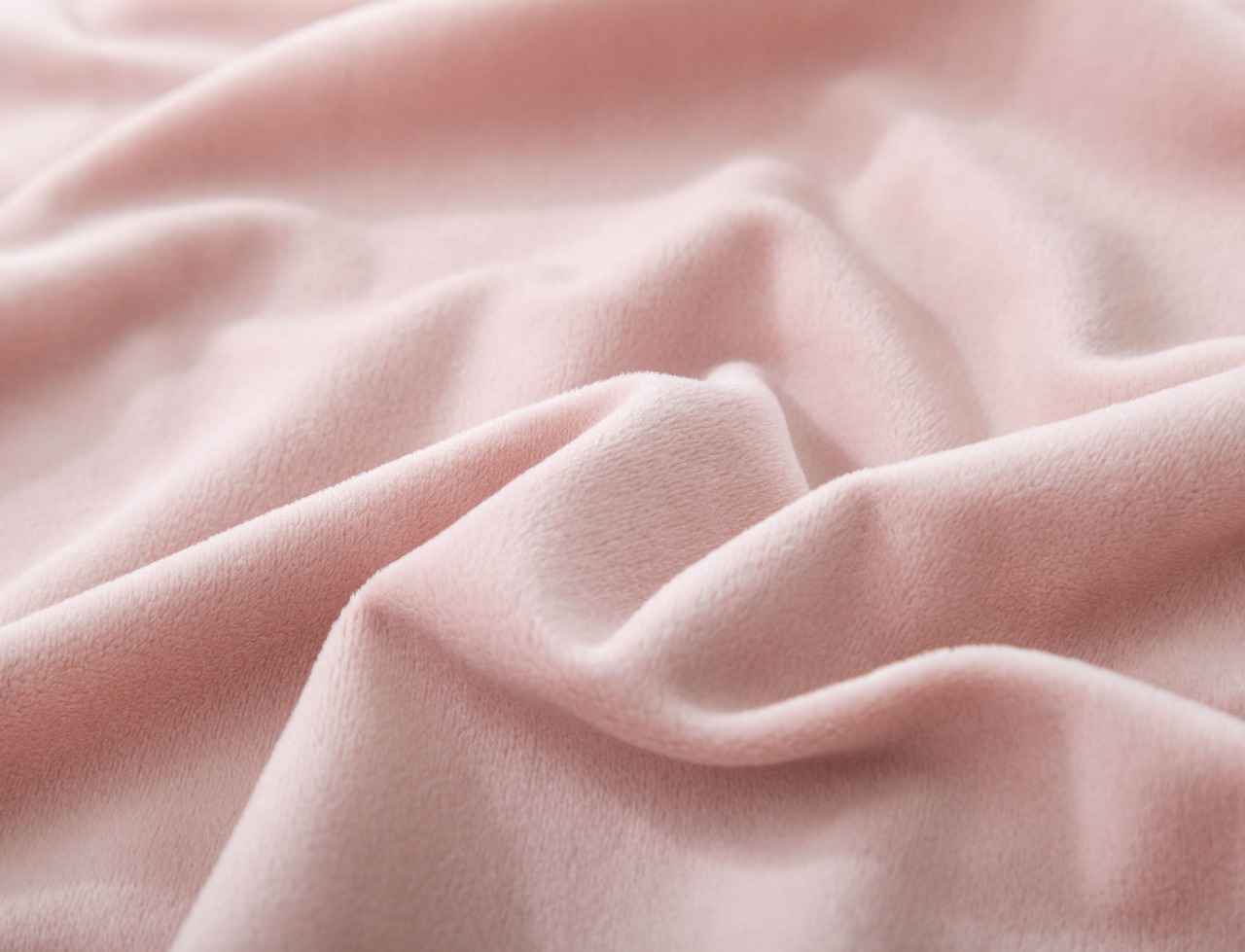
Inspiration from Cultural Significance
The kimono is more than just a garment; it is a profound representation of Japanese culture, history, and identity. Each kimono tells a story, reflecting the values, traditions, and artistry of the era it represents. Understanding the cultural significance of kimonos can greatly enhance your DIY projects, allowing you to infuse them with meaning and history.
Historically, kimonos have been worn during important life events, such as weddings, festivals, and ceremonies. The colors, patterns, and styles often symbolize various aspects of life, such as prosperity, happiness, and even seasonal changes. For instance, a Furisode, characterized by its long sleeves, is traditionally worn by young women during formal occasions, symbolizing youth and elegance. In contrast, the Yukata is a casual summer kimono that embodies the spirit of festivals and leisure, often made from lightweight cotton.
When embarking on your DIY projects, consider incorporating these elements into your designs. For example, you can choose colors and patterns that resonate with specific themes or personal milestones. By doing so, you not only create a unique piece but also pay homage to the rich traditions associated with kimonos.
Moreover, the techniques used in kimono making, such as Shibori dyeing and intricate embroidery, can serve as inspiration for your own creative process. These methods not only enhance the visual appeal of your projects but also connect you to the cultural practices that have been passed down through generations.
In conclusion, drawing inspiration from the cultural significance of kimonos can elevate your DIY projects beyond mere aesthetics. By embracing the history and meaning behind these garments, you can create pieces that are not only beautiful but also rich in storytelling and heritage.
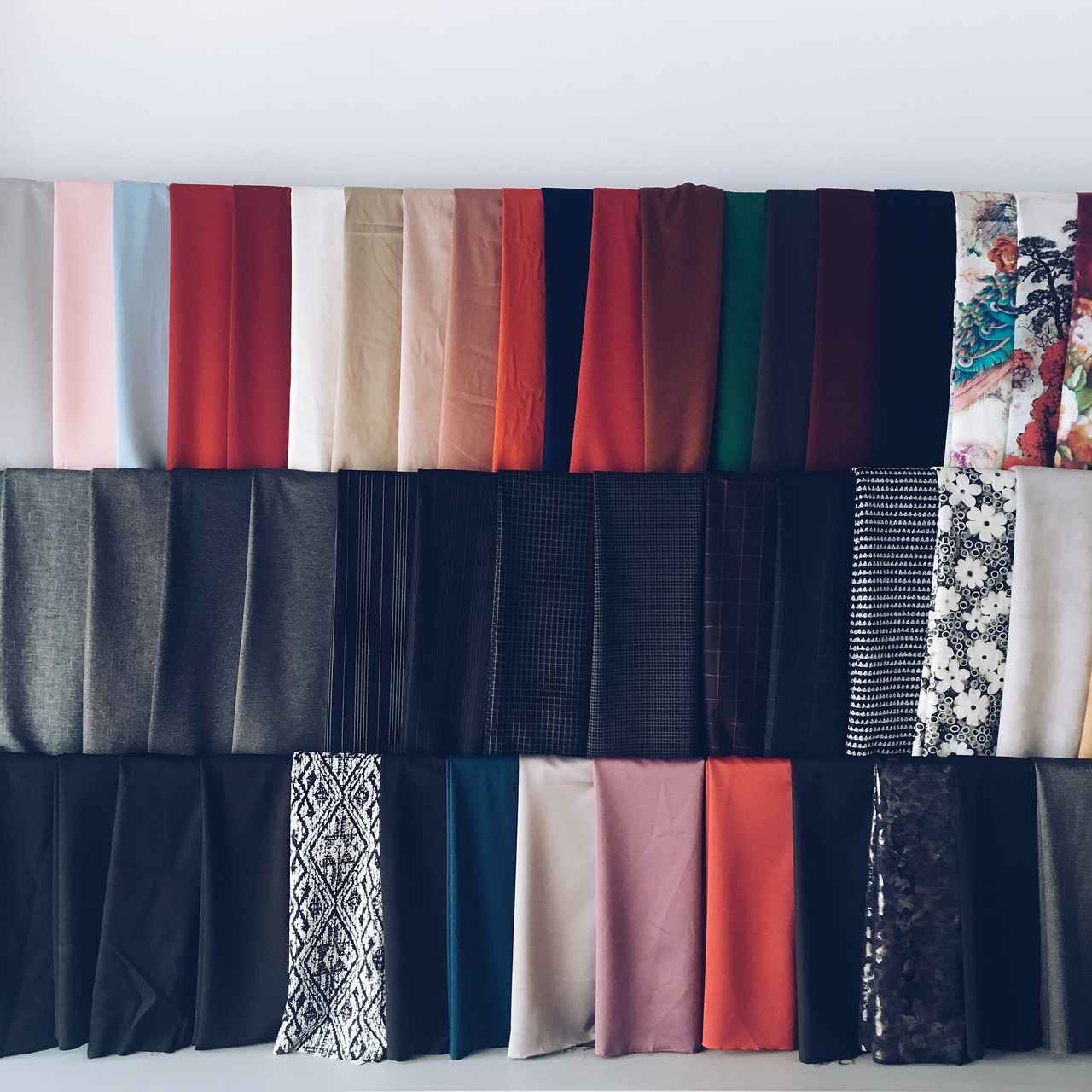
Tips for Sourcing Kimono Parts
When embarking on a DIY kimono project, sourcing high-quality fabrics and accessories is crucial to achieving the desired aesthetic and durability. Here are some effective strategies to help you find the best materials:
- Local Fabric Stores: Start by visiting local fabric shops, where you can physically feel and assess the quality of fabrics. Look for stores specializing in Asian textiles, as they often carry authentic kimono fabrics.
- Online Marketplaces: Websites like Etsy, Amazon, and specialized fabric retailers offer a wide range of kimono fabrics and accessories. Always check customer reviews and ratings to ensure quality.
- Japanese Import Shops: If there are any Japanese import shops in your area, they can be a treasure trove for authentic kimono materials. These shops often carry traditional fabrics and accessories that can elevate your project.
- Textile Fairs and Craft Shows: Attend local textile fairs or craft shows where vendors showcase unique fabrics. This is a great opportunity to discover rare materials and even negotiate prices.
- Online Fabric Swatches: Many online retailers offer fabric swatches for a small fee. This allows you to evaluate the texture and color before making a bulk purchase.
- Social Media Groups: Join online communities and social media groups dedicated to kimono making and sewing. Members often share their favorite sources for materials and may even sell or trade fabrics.
By utilizing these resources, you can ensure that you have the best materials for your kimono project, allowing your creativity to flourish.

Final Thoughts on Your Kimono DIY Project
As you reach the conclusion of your kimono DIY project, it’s essential to reflect on your journey and the skills you’ve acquired along the way. Embracing creativity is key to ensuring that your kimono not only showcases your craftsmanship but also resonates with your personal style. Here are some important takeaways to consider:
- Personal Expression: Your kimono should be a true reflection of who you are. Don’t shy away from incorporating colors, patterns, and designs that resonate with your personality.
- Attention to Detail: Every stitch and embellishment counts. Pay close attention to the details, as they can elevate your project from ordinary to extraordinary.
- Experimentation: Embrace the process of trial and error. Experiment with different fabrics, techniques, and accessories to find what works best for your vision.
- Community Engagement: Share your journey with others. Join online forums or local crafting groups to exchange ideas, receive feedback, and gain inspiration from fellow creators.
- Continuous Learning: The world of DIY is vast and ever-evolving. Keep learning new techniques and exploring different styles to enhance your skills.
Remember, the beauty of DIY projects lies in the journey itself. Each kimono you create tells a story, showcasing your growth and creativity. So, as you wrap up this project, take a moment to appreciate your hard work and the unique piece you’ve crafted. Let it serve as a reminder to always embrace your creative spirit and to continue exploring new horizons in your crafting endeavors.
In conclusion, your kimono project is not just about the final product; it’s about the experience, the learning, and the joy of creating something that is uniquely yours. So go ahead, wear your kimono with pride, and let it inspire others to embark on their own creative journeys!
Frequently Asked Questions
- What types of fabrics are best for kimono DIY projects?
When it comes to kimonos, the fabric you choose can make or break your project! Silk is a classic choice, offering a luxurious feel, while cotton is great for casual wear like Yukatas. If you’re looking for something more budget-friendly, consider synthetic materials that mimic the look of traditional fabrics.
- How do I choose the right kimono pattern?
Choosing a pattern can feel overwhelming, but it’s all about what resonates with you! Think about the occasion and your personal style. Traditional patterns have deep cultural meanings, while modern designs can give a fresh twist to your DIY project. Always consider what speaks to you and fits your vision!
- What accessories should I include in my kimono project?
Accessories are the cherry on top of your kimono! The obi is essential for tying everything together, while the obijime adds a decorative touch. Don’t forget about haneri, the collar that can elevate your look! Choosing the right accessories can truly transform your creation.
- Can I customize my kimono with embroidery?
Absolutely! Embroidery is a fantastic way to personalize your kimono. You can add your own designs or even traditional motifs to make it unique. Just think of it as adding your personal signature to a masterpiece!
- Where can I find quality kimono materials?
Finding high-quality materials is easier than you think! Check out local fabric stores for authentic options, or explore online marketplaces for a wider selection. Always read reviews to ensure you’re getting the best quality for your DIY adventure!
